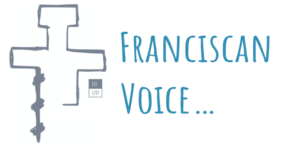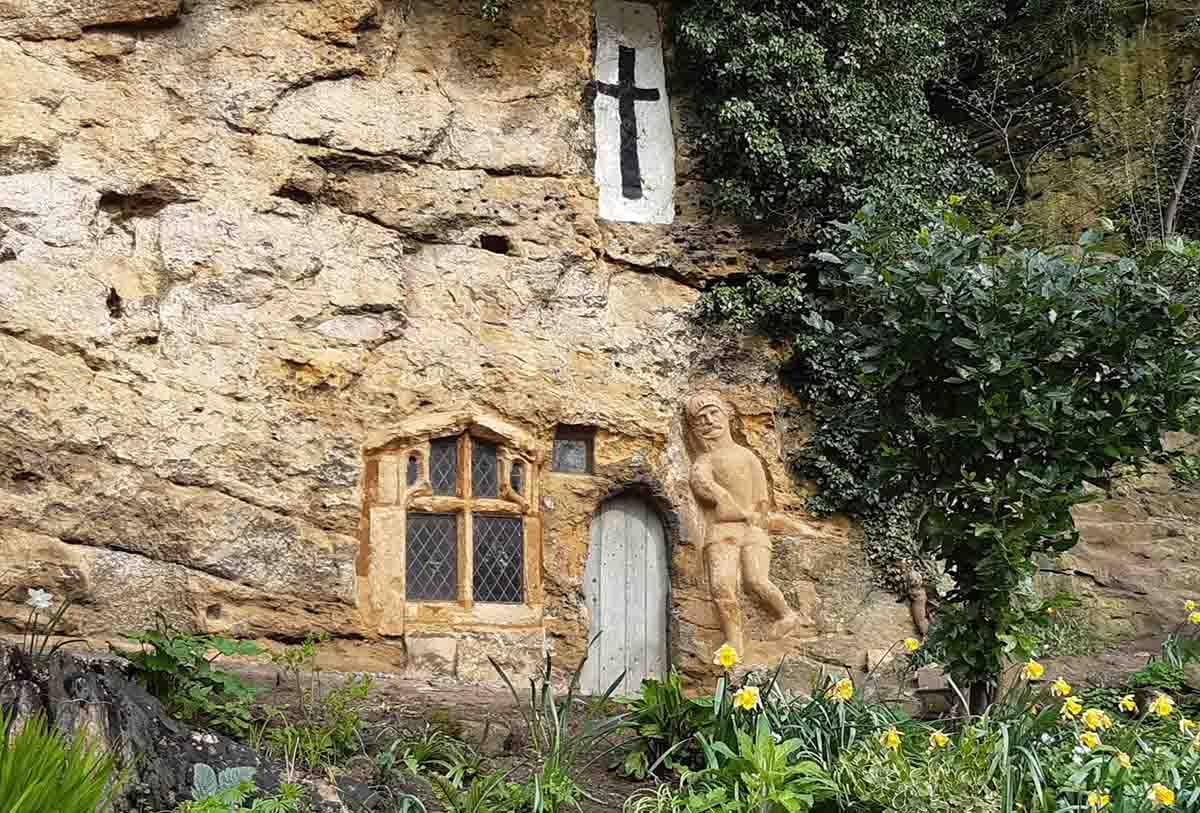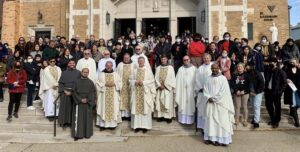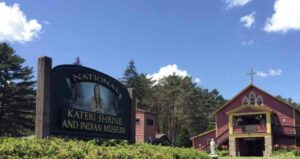In part 1, we visited the ruins of Knaresborough Castle and walked along the River Nidd. In this post, friar Solanus Mary takes us to a mediaeval Marian Shrine.
Mediaeval Marian Shrine
As you walk along the riverside for a short distance, you will eventually reach the entrance gate to the shrine. On the rock face beyond the gate, can be seen the carved figure of a knight – probably a Knight Templar (the Knights once lived in the nearby village of Little Ribston). As can be seen from the photograph, the Knight is brandishing a sword in his hand: he is guarding the shrine. The entrance door to the chapel stands to his left. This door leads into the tiny chapel, which is actually formed from a cave inside the rockface. Facing the entrance is a niche which contains a statue of the Blessed Virgin Mary.

As you look up towards the ceiling you will notice a carved rose, which may represent the emblem of the House of York (we are in the county of Yorkshire). This rose carving pre-dates the Tudor period. The space inside the chapel can only hold a few persons at a time, so when Mass is celebrated it is held outside.
History of the Shrine
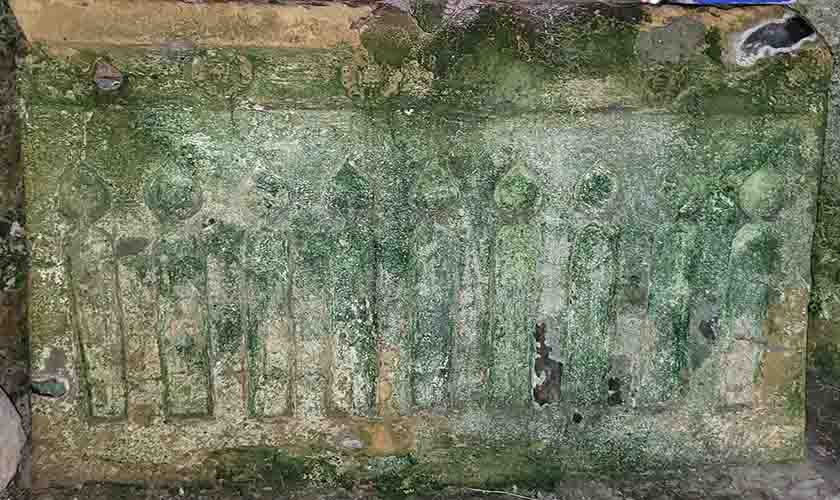
So what is the origin of this Marian Shrine? Like many other Marian shrines before it, and after it, this shrine was built in gratitude to the Holy Virgin for a miracle obtained through her intercession.
The shrine dates from 1408, when it was built by a local stonemason, John the Mason. We are told that one day John’s son was playing under the cliff when there was a sudden rock-fall. John saw what was happening but was too far away to prevent his son from harm. He cried out to the Holy Virgin to save his son. The course of the boulders was altered, and the boy escaped unharmed: a miracle, by all accounts. John attributed this miraculous escape to the intercession of the Virgin Mary, and he built the shrine in her honour. Its construction is a remarkable feat, hewn out of the very rock-face itself. Indeed, it is so solid, it undoubtedly proved too difficult for King Henry’s henchmen to destroy it a century and a half later.

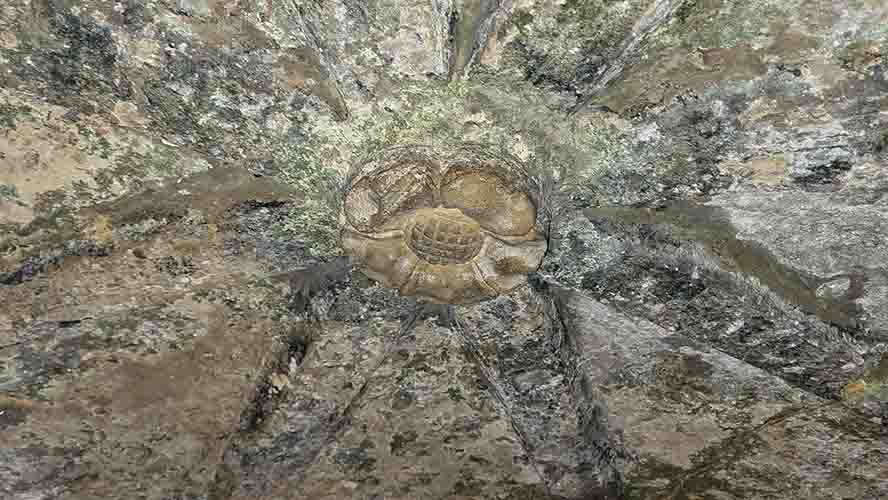
The Shrine in modern times
In 1916, the shrine was bought and restored by another John – John Martin, who gave it to Ampleforth Abbey, a nearby Benedictine Abbey. In recent years ownership of the shrine has been passed on to a local trust. A new statue of the Madonna and Child has been placed inside for veneration. This trust carried out much needed maintenance work in 2022. The shrine is now open to the public for a few hours during the summer months; outside of these times, visits are by prior arrangement with the trust.
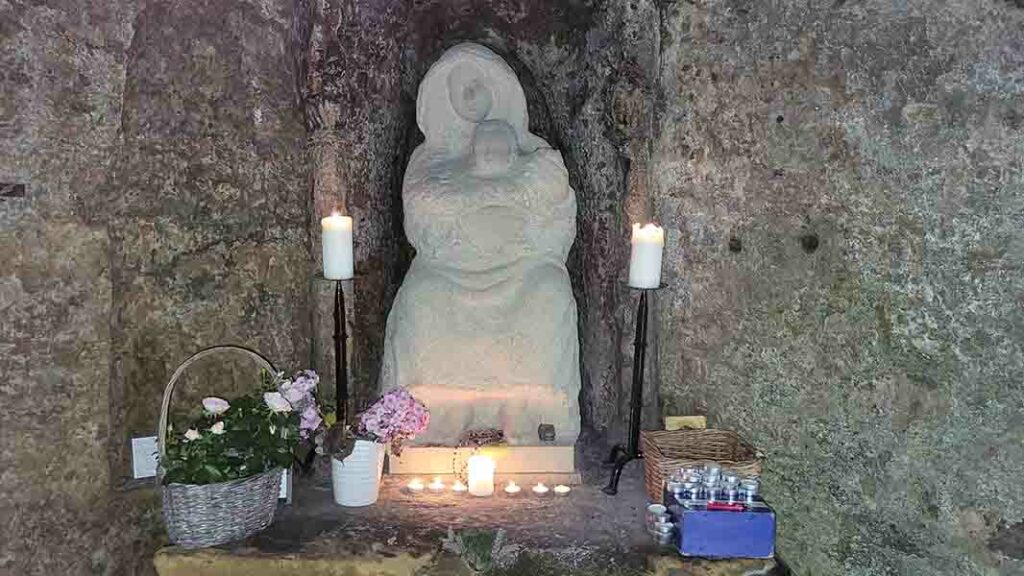
To be continued…
– friar Solanus Mary OFM Conv.
